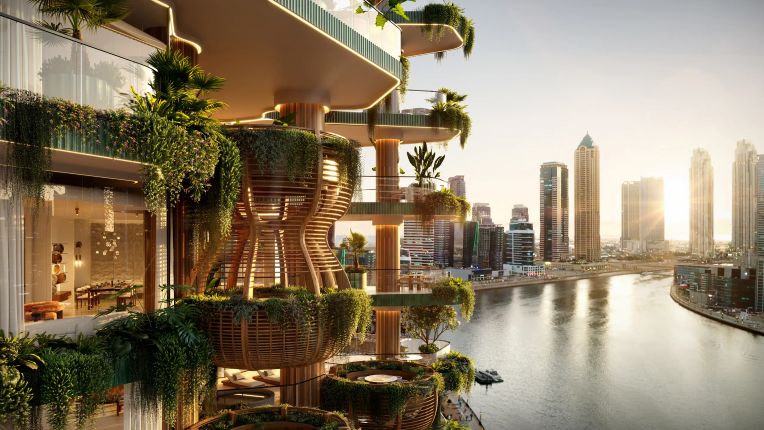Wellness-Centric Hotels: Designing spaces that enhance health and well-being

Conde Nast Traveller Middle East
Team L&M
The world of hospitality is going beyond memorable stays to foster a sense of well-being with a holistic experience. More than just a place to stay, today’s smart travellers seek an integrated experience that will enhance their overall well-being. A wide range of hospitality settings, including hotels, resorts, and boutique retreats, have seen a remarkable transition as a result of the growing demand for wellness-centric design. From thoughtfully designed meditation areas to integrating hydrotherapy elements in bathrooms, hotels are exploring myriad ways to enhance health during stays. In this article, Ar. Anil Badan, Founder and Principal Architect at Studio B Architects shares tips for integrating wellness-centric elements in hotel designs.
Integrating Biophilic and Sensory Design Elements
Luxury hotels today are integrating biophilic principles in their designs, fostering a vibrant and lively atmosphere. Biophilia integrates greenery in the interiors, enhancing ventilation and promoting a connection with the outdoors. This philosophy in hotel design creates a fresh atmosphere, reducing pollutants while purifying the air. Moreover, sensory design elements also contribute to a wellness-centric design. Touch, smell, and sound can foster a tranquil ambiance, with tactile materials, relaxing fragrances, and soft, natural sounds that can all greatly improve the visitor experience.
Right Lighting for Wellness in Rooms
Lighting has a great impact on the mind and body of a person. Hotels are integrating the essence of natural light into designs through large windows for rooms, or skylights for boutique cottages. Moreover, artificial light can also help to enhance the mood in an area. With the ability to switch between warm light for the evening and bright, stimulating light for the day, guests can regulate their surroundings with adjustable lighting options. Guests can also change the colour temperature from cool daylight to warm evening light through advancements in lighting technology that incorporate circadian rhythms. These improvements improve the quality of sleep and overall guest satisfaction by creating a cosy and peaceful environment.
Fitness, Meditation Areas, and Spas
Embedded within the context of wellness, hotels also integrate fitness areas and open-air gyms, redefining the idea of holistic experience. From underwater treadmills to special workout areas, boutique hotels emphasise the idea of wellness in design. Further, secluded meditation and yoga nooks are created in landscapes to offer a rejuvenating and scenic experience for the guests. These are often surrounded by sensational landscapes that imbue the senses with smell and touch. Additionally, spas are also included in hotels for the guests to wash away their worries and indulge in a memorable stay.
The Idea of Personalised Wellness
Guest rooms are changing from being places to sleep to becoming havens for well-being. The design of guest rooms now promotes productivity and leisure, from air purification systems and noise-reducing features to ergonomic furniture and ergonomic bedding. Hotels with a wellness focus are adding amenities like aromatherapy diffusers, soothing colour schemes, and even on-demand meditation and exercise materials. By offering a personalised setting, hotels are encouraging visitors to put their health first, whether that means resting or engaging in active self-care.
In essence, the guest experience in hotels is shifting towards a more wellness-centric design, enhancing health and well-being. With these improvements in designs, hotels are creating an etching signature in the evolving landscape of hospitality.

